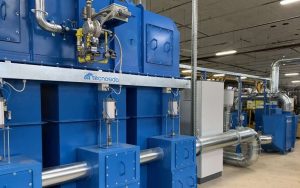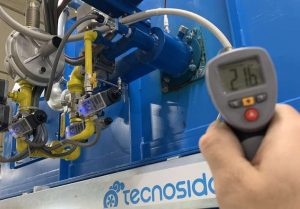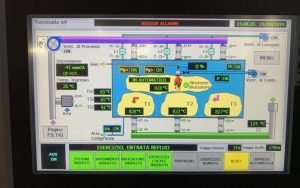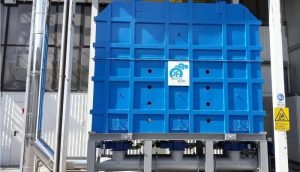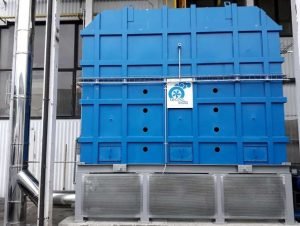Regenerative thermal oxidizers for VOCs and fumes abatement
Regenerative thermal oxidizer / VOCs thermal oxidation
Application 1: COV thermal oxidation in the automotive sector
The Customer described in this case study is a global leader in fluid systems production for the automotive sector. Thanks to its technical knowledge, the Company represents a reference for international automotive manufacturers.
Gallery
The management of the italian branch contacts Tecnosida® requiring a Regenerative Thermal Oxidizer (RTO) proposal able to tackle a VOCs emission problem related to the production of coated components, which involves VOCs and fumes.
Regenerative Thermal Oxidizer (RTO) for VOCs oxidation in pipes coating plant
After a first contact with the Company, Tecnosida® organizes a site inspection to assess the technical situation and understand completely customer’s needs. Tecnosida® technicians, after verification on the existing RTO, highlight two main problems:
- accumulation of material = pollutants sent to the combustion chamber, initially at liquid state (drops), change state due to temperature variations. For this reason, the pollutant condenses and this causes an accumulation of material;
- high presence of dust = inside the ceramic heat recovery media an high presence of dust, resulting from thermal degradation of the pollutant, is found.
Based on technical inspection outcome, Tecnosida® put forward solutions to contain customer’s problems.
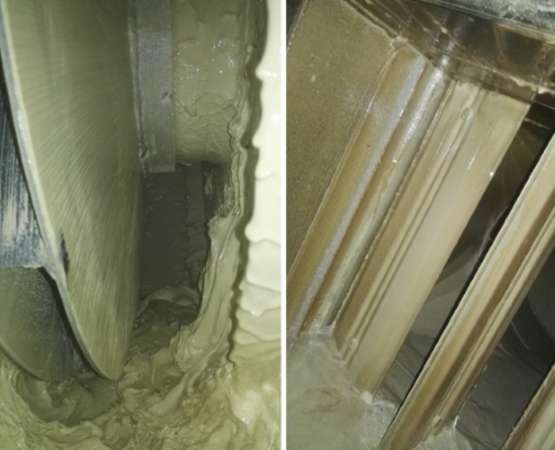
Technical characteristics of THEROX thermal oxidizer installed in Liguria
In designing the second oxidation system, Tecnosida®, verified the exhausted materials accumulation problem described before, project a pre-treatment system able to completely separate condensables before they enter the combustion chamber.
Specifically, this system consists of two stages:
- separation trap = the air flow resulting from the production process is conveyed into a pre-formed structure able to reduce the speed of the gas stream thus enabling the condensates to precipitate in a collector;
- rotary filters = a system consisting of two rotary filters, is placed after the trap to allow further filtering of the pollutants still present. Specifically, inside the rotary filter the gas stream is forced to pass through a coil of filtering material. The operation of rotary filters is managed automatically by a pressure switch, that, depending on the pressure drop, replaces the dirty portion of media with the clean one. Once the media is completely consumed, the flow is automatically diverted towards the back up filter, allowing replacement of the filter-coil on the main one.
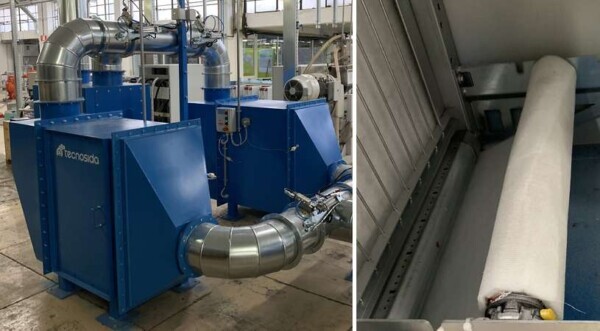
After this pre-filtering phase, the air flow is carried by the process fan into the THEROX regenerative thermal oxidizer. The RTO designed for this application consists of:
- combustion chamber
- three ceramic heat recovery media
- methane burner
- control panel for the automatic management of valves positioned on the side of the machine.
The filtering media is made of Honeycomb material: ordered blocks with a high exchange surface that allows greater efficiency.
The main data of the RTO are:
| Regenerative Thermal Oxidizer (RTO) | |
| Pollutants | VOCs and fumes |
| Flow rate | 1.500 Nm3/h |
| Temperature for combustion of VOCs | 750°C |
| Residence time | s > 0,8 |
| Methane calorific value | 8.600 Kcal/Nmc |
| Burner heat output | 200.000 Kcal/h |
| Power of the fan | 4 kW |
To guarantee a high abatement efficiency and a correct sizing, Tecnosida® engineers have taken into account three fundamental factors for VOCs oxidation:
- temperature: to allow a correct oxidation temperature must be around 750 °C. To achieve this we use:
- heat produced by VOCs during oxidation;
- methane burner to reach the required temperature
- time: The residence time of the pollutants inside the combustion chamber varies according to the type of VOC. In this application the residence time is 0.8 seconds but, with complex hydrocarbons, it can increase up to 2 or more seconds;
- turbulence: parameter to evaluate how well mixed and in motion are molecules present inside the effluent. The degree of turbulence between oxygen and pollutants to break down is of primary importance.
Tecnosida® plant was built in compliance with the Italian technical reference BAT (PC.T.02) and succeeded in pollutant emissions reduction, solving the customer’s problems.
Oxidiser’s remote management system
As well as the disclosure in the previous paragraph, in order to reduce the VOCs, the temperature must be kept steady and stable at 750-800°C, thanks to a methane gas burner and taking advantage of the heat produced by the organic compounds during oxidation.
In order to monitor this value and to avoid energy waste, Tecnosida has created a remote management system which controls the temperature of entrance, exit and each single room which makes it up. As you can see in the side picture, the PLC screen shows in real time the data about the pre-filtration system and the Regenerative Thermal Oxidiser (RTO) and its parts. Thanks to the remote management system, we would be able to have an overview of the plant and promptly respond, in order to improve its operation.

Application 2: VOCs oxidation from abrasives production process
The Customer presented in this second realization deals with the production of abrasive media for surfaces treatment. It is a producer of wheels for metal finishing, diamond’s abrasives for squaring ceramic tiles and refractory for aluminum production.
This Company contacts Tecnosida® because the production process causes the emission of a high quantity of styrene that does not comply with limits established by current italian regulations.
Styrene regenerative thermal oxidation for abrasive production
After a site inspection used to source all the necessary data and measurements for proposal drafting, Tecnosida put forward Regenerative Thermal Oxidation as the most suitable solution to solve the customer’s problem. The characteristics of Therox Thermal Oxidizer described in this application are similar to those presented previously. In this case, however, customer’s production process does not involve accumulations of material inside the oxidation chamber, so it was not necessary to create a pre-filtration system. The gaseous flow is conveyed directly into the RTO through a series of pipes and a valve system installed in the lower part of the oxidizer.
As we said in the previous part, in this case the pollutant is styrene:
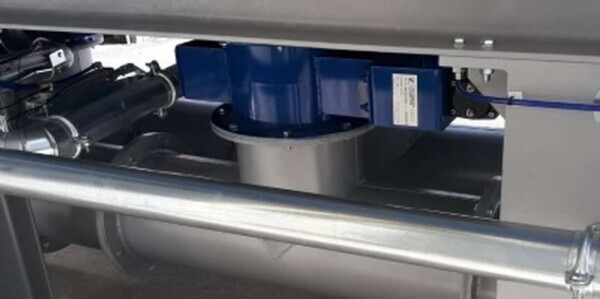
| Chemical formula | Molar Mass (g/mol) | Calorific Value (Kcal/Kg) | Self-ignition Temperature (°C) | Solubility in water (g/l) | |
| Styrene | C8H8 | 104,15 | 9.600 | 490 | 0,24 |
To reach the required emission values, the combustion chamber is designed to work at a temperature of 750-770°C, with a residence time of 0.8 seconds.
The valves are positioned in the lower part of the RTO in order to design the system vertically, thus optimizing space consumption.
Product data scheme:
| Regenerative Thermal Oxidizer (RTO) | |
| Pollutants | styrene |
| Flow rate | 2.500 Nm3/h |
| Minimum operating temperature | 750°C |
| Maximum operating temperature | 950°C |
| Residence time | s > 0,8 |
| Burner heat output | 150 kW |
| Methane calorific value | 8.600 Kcal/Nmc |
| Power of the fan | 5,5 kW |
The complete system is built in compliance with the Italian technical regulamentation BAT (PC.T.02) and succeeds in reducing emissions under legal required limit, solving the customer’s problems.
Application 3: Flexible packaging production:
The client is an important company that manufactures flexible packaging for Italy and other countries. The realization of flexible packaging create the emission of fumes containing VOC. Tecnosida® was contacted to solve this situation.
Thermal Oxidizer:
Tecnosida®, after a careful verification on customer’s production site, has studied the application of the regenerative THEROX system for the reduction of pollutants present in the gaseous stream (VOCs) and produced by the print machine. In particular, the proposed system is a three cans regenerative thermal oxidizer (RTO) able to ensure the highest operation standards and energy saving.
Thermal Oxidizer benefits:
- Pollution reduction (according to legal limits);
- Abatement of auxiliary fuel consumption thanks to the THEROX regenerative heat exchanger sized and designed for the specific application;
- Installation in a short time;
- Easy to manage.
Tecnosida® plant is realized in compliance with the BAT (PC.T.01). It reduces the emissions within the limits established by law, solving the problem of our customer.
